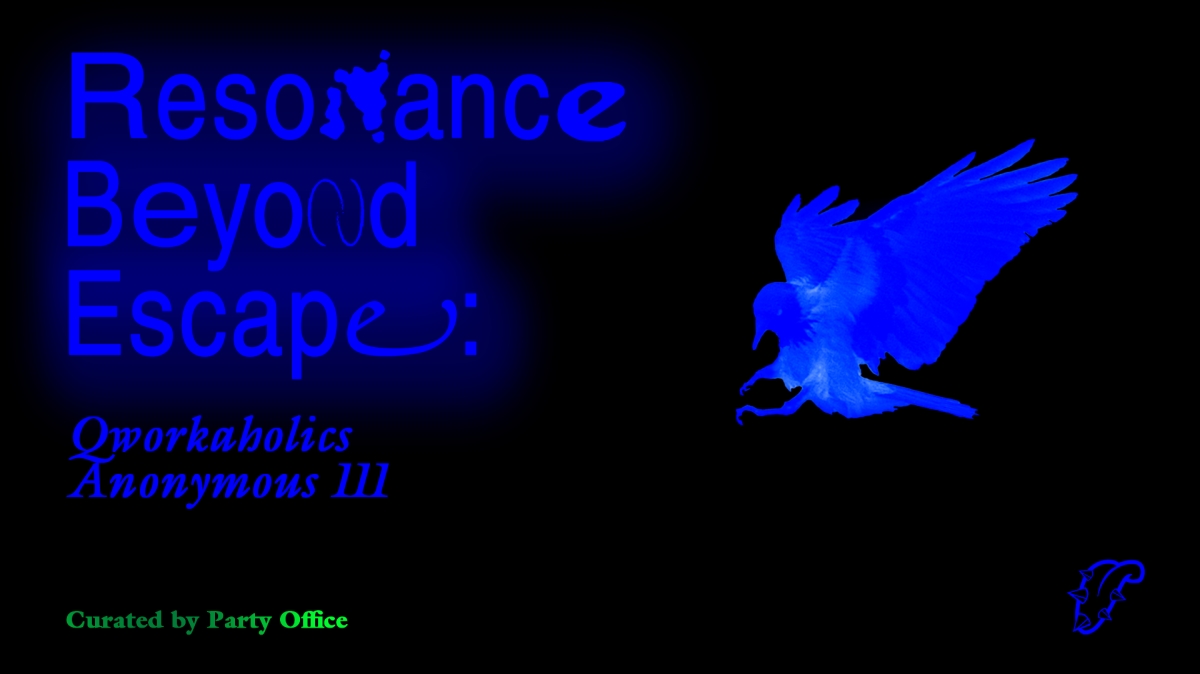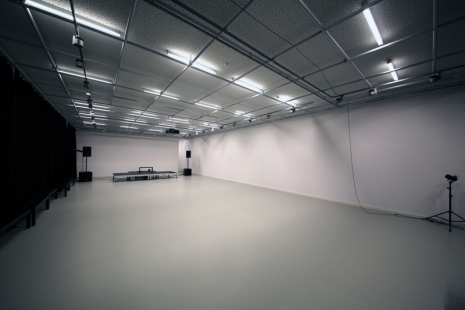The exhibition is curated by artist-curator Vidisha-Fadescha founder and director of Party Office. Participants include mid-career and emerging artists mostly living away from their homelands — countries with different colonial histories and present. Anna Ehrenstein, Blue Paul Fleming, Gabriele Gervickaite, Margot Vic, Malik Irtiza, Mihaela Drăgan, Mila Kostianá, Rafiki, Noor Abed, Pêdra Costa, Queer Falafel, Shripad Sinnakaar, Simon(e) Jaikiriuma Paetau + Natalia Escobar and The Albanian Conference (Anna Ehrenstein, Fadescha, Rebecca Pokua Korang, DNA).
The exhibition opens on Saturday 15 June, with 12 hours of programming from 6pm to 6am on Sunday. Artists in residence Blue P. Fleming, Margot Vic, Queer Falafel, Pêdra Costa and Fadescha will showcase performances and lectures. There will also be a film screening, a listening session and a party.
Throughout the exhibition, from June to October, along with a programme of film screenings and lectures curated by Party Office, NAC will invite interludes by Lithuania-based organisers and artists to critically illustrate their positionality within the discourse of race, post-colonial nationalism, global economics and neo-liberalism.
The exhibition RESONANCE BEYOND ESCAPE: QWORKAHOLICS ANONYMOUS III, through poetry, performance-videos and video art, illustrates resemblances in the complex and diverse colonial histories that engulf us and that we embody, asserting the need for personal agency in one’s story and collective allyship against the supremacist order.
In their poem Begumpura, Shripad Sinnakaar asks ‘How many generations does it take for a dream to come true?’ and to fulfil the desire for a casteless world. Our Songs Were Ready for All the Wars to Come, a film by Noor Abed, archives situated stories through ‘folklores’ as a common emancipatory tool for people to overturn the dominant discourse in the social formation of Palestine. Anti-caste polymath Dr. B.R. Ambedkar writes, ‘I am like a rock which does not melt but turns the course of rivers. Wherever I may be, I will never lose my separate identity.’ asserting that when in solidarity one doesn’t lose their individuality.
Queer Falafel, from Lebanon, who transmutes their experience of the violence of the Zionist occupation and daily xenophobia through their liberatory performances and music, will showcase a new video work. Lithuanian artist Gabriele Gervickaite will showcase a video work of collages of medical illustrations from the Soviet period pasted into new landscapes to understand the ethics and influence of these images. Rafiki’s photograph honours the memorial day of the Congolese Genocide and reminds us of the ongoing violence on her people. In other photographs, Rafiki shares a collectively produced work of veils in beadwork spelling out GA-ZA, C-ON-GO and PE-AC-E [Image 01].
Water is a common site in many works, mostly physical; as a need, connection and witness. Pedra Costa’s work The Lady in White was performed at the Ponta Negra Beach in 2015, in Natal-Brazil where she grew up; during her residency this summer in Nida she performs similarly with her handmade adult diaper dress at the Parnidis Dune, the drifting coastal sand dune on the Curonian Spit. Both of these places had military stationed during World War II. In her video In Search Of Apples, Almonds And Cherries Malik Irtiza shows a figure wearing black walking in the valley of Kashmir with a piece of found tongue. Such symbols mean more than their physicality.
Sufi mystic Rumi writes, ‘Work in the invisible world at least as hard as you do in the visible.’ Artists-in-residence Pêdra Costa, Anna Ehrenstein and Blue P. Fleming live in both realms; in the ‘invisible’ through spells, hypnosis, altar, kink and such. Anna Ehrenstein offers a sound piece – a guided hypnosis to help you unlearn the architecture of imperial violence on the cloud. The exhibition has a spell against the fascists by Michela Drăgan, who conceptualised Roma Futurism.
On 26 January 2014 at the Vatican, in Italy, the pope released two peace doves as a performative gesture asking for peace in Ukraine; these doves were immediately attacked by a crow and a seagull. Maya Angelou in her poem Caged Bird (1969) writes ‘The caged bird sings with a fearful trill of things unknown but longed for still’. For this exhibition, we use the form of the crow at the Vatican, as the Blue Bird, an icon for a collectivity which challenges organised supremacist structures of justice that fail to work towards the protection of all precarious lives and maintain inequality. Crows and Ravens are magical companions to witches and are commonly present in Lithuanian folktales. The wooden sculptures at the Hill of Witches, near Juodkrantė, illustrate these folktales while monuments on the Spit also suggest archives of Paganism, a practice and community lost to imperialism. ‘There is a timbre of voice which comes from not being heard… noticed only by others not heard for the same reason.’ are lines from Audre Lorde’s poem Echoes the last one recited by her in 1992. The title of the exhibition emerges from this poem. The Blue Bird demands not only its own freedom but also the freedom of figures beyond its cage.
For the residency conducted alongside the exhibition, Fadescha through their project Qworkaholics Anonymous, the curatorial framework of the artist-residency, invites BIPoC, queer and Trans people who are burnt out due to racist and transphobic neo-liberal and barbaric social order, to come together and nourish themselves through self-respect, away from grind culture, realigning to their values and needs. The artists spend between five to nine weeks at NAC between May and June. The artist residency also becomes a pedagogical process to learn from and of each other, through nesting and nurturance.
The residency and exhibition Resonance Beyond Escape: Qworkaholics Anonymous III are funded by the Lithuanian Council for Culture and Neringa Municipality.





